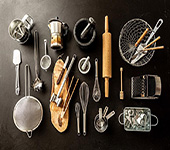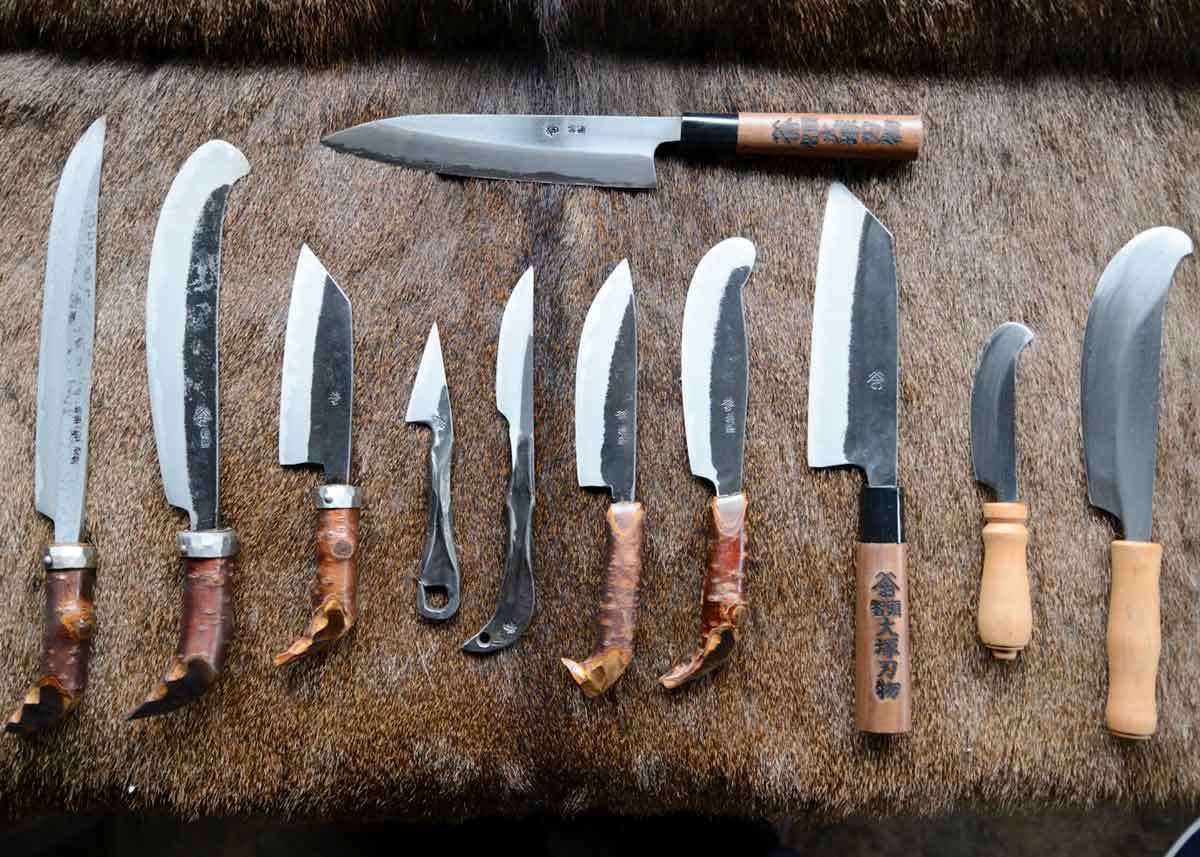Do you know the history of kitchen knives? It’s a pretty interesting story. Kitchen knives have been around for centuries, and they’ve evolved significantly over that time. Different cultures have developed unique designs and use for kitchen knives, and the technology behind them has also changed a lot. Today, kitchen knives are more than just tools for chopping up food – they’re essential pieces of kitchen equipment that can help you cook better meals.
In this blog post, we at Chefshop will look at the history of kitchen knives and how they have become essential tools in the modern kitchen.
The First Knife
Kitchen knives are one of the most ancient tools used by man and remain just as important today as they were centuries ago. Oldowan knives are the oldest cutting tools dating back over 2.5 million years. They were first discovered in the Omo and Gona Basins (modern Ethiopia). These knives are made from pebbles and stones. Oldowan knives were used for activities like butchering animals.
The Bronze Age
There came the bronze age in 1500 BC, with the development of metalworking. During this period, bronze knives started to appear in the kitchen and were used for various tasks like slicing meat, fish, fruits, and vegetables.
Bronze kitchen knives were not as durable for cooking as earlier carved stone varieties because they corroded easily and dulled quickly.
The beauty of these knives is that they were very sharp to the extent that barbers started using them for cutting men’s hair.
The Iron Age
The Iron Age saw yet another massive revolution in the world of kitchen knives. Knives made from iron were discovered around 1000 BC, and this brought about a new era for kitchen knives. These knives were much sharper, more durable, and easier to use. They provided a lot of flexibility and utility in the kitchen, along with a much longer lifespan than their predecessors(bronze knives).
Kitchen knives made from iron lasted much longer than those forged from bronze. Not only were they more durable, but they also kept their sharpness for a longer time with little to no maintenance.
The Middle Ages
The Middle Ages saw the development of new technology and tools, including kitchen knives. During this period, steel was invented and used to make high-quality kitchen knives that were sharper and more durable than ever before.
These knives became available in different shapes, sizes, and styles for various purposes in the kitchen. You could find long-slicing, short-utility, and even specialised blades used for specific tasks.
In the 15th Century, only wealthy families could afford a quality knife that performed multiple functions. It wasn’t just used in the kitchen; it was also carried as a weapon to protect against threats.
The development of steel kitchen knives also allowed people to add decorative elements like etchings and patterns on the blade. This made them look more attractive and gave them a unique personality.
Steel knives can now be used for mincing, paring and boning.
17th Century
In 1669, in an effort to reduce violence and accidents, King Louis XIV of France passed a law making it mandatory for all knife points to be blunted. This law made kitchen knives safer to use.
By the 19th Century, forks had become commonly used, which led to the demise of sharp kitchen knives at the dinner table. Cutting and eating food with blunt-edged knives and forks was easier than with sharp ones. With kitchen knives becoming affordable and accessible to all, they became a common everyday item.
20th Century
In the 20th Century, stainless steel replaced steel. This allowed for the production of kitchen knives with more durable edges that could keep their sharpness longer and resist rust better.
Stainless steel is extremely durable, which makes it perfect for kitchen knives. In addition to being able to withstand corrosion from foods and other substances without tarnishing or rusting quickly as other metals do over time, stainless steel maintains its sharpness exponentially better than any kind we’ve seen before.
The inception of modern knives
Knives have come a long way since they were first invented. Today, various materials can be used to make knives, including stainless steel, ceramic, titanium, and plastic. Each of these materials has its unique benefits and drawbacks.
Stainless steel knives are still the most popular type of knife. They are durable and can withstand a lot of wear and tear. However, the quality of stainless steel used in knives today is much better than that of knives from the 20th Century.
Other materials, such as ceramic and titanium, are also growing in popularity. Ceramic knives are sharp and durable but can chip or break if not handled carefully. Titanium knives are lightweight and corrosion-resistant, but they can be expensive.
Plastic knives are becoming increasingly popular because they are inexpensive and lightweight. However, they are not as durable as metal knives. Plastic knives are generally used for travel or everyday use.
Conclusion
As you can see, the history of kitchen knives is a very long and colourful one. However, using knives for cooking predates even fire! Knives have been one of the most important tools that we rely on for survival since prehistoric times. Choose a good kitchen knife and treasure it because we just couldn’t do without it!
At Chefshop, we understand the importance of having quality knives in your kitchen. That is why we offer quality over quantity sets of knives to suit different needs and budgets. With us, you can be sure that your knife collection will last for years without any issues!
So visit our website at www.chefshop.co.nz today and start shopping!
For more information about our products or services, please don’t hesitate to get in touch.
We are located at:
14 Kent Street, Newmarket, Auckland 1023
Phone: +64 09 480 1326







